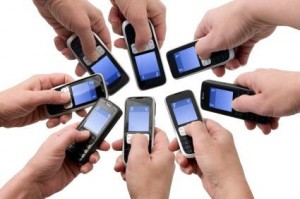 Consumer Goods Technology (CGT), a trade publisher, surveyed employees from CPG companies in the US about mobile development at their firm. More than 80% of respondents said their company had at least one mobile app in use in February 2013, and nearly three-quarters had two or more apps. Moreover, three out of 10 companies had implemented more than five apps.
Consumer Goods Technology (CGT), a trade publisher, surveyed employees from CPG companies in the US about mobile development at their firm. More than 80% of respondents said their company had at least one mobile app in use in February 2013, and nearly three-quarters had two or more apps. Moreover, three out of 10 companies had implemented more than five apps.
The biggest reason CPG companies reported implementing consumer mobile apps was to drive special promotions, cited by half of respondents. This makes sense since getting deals is one of the primary reasons shoppers turn to their phones in-store. Additionally, special promotions can drive immediate sales and are a good way to reach out to new customers.
Mobile is having a major impact on the retail sector, as consumers use their smart devices to research and buy at home and in-store. The consumer packaged goods (CPG) industry, in particular, is responding by creating mobile apps, which give users more information on products, and often provide added features, such as games and interactive tools, related to CPG products.
Loyalty programs, which incentivize consumers to stick with a brand, came in second, with 44% creating mobile apps for this purpose. Another one-third of respondents said consumer apps were used to provide additional product information.
In November 2012, the Path to Purchase Institute surveyed US CPG marketing executives about what mobile marketing tactics they used specifically to target in-store shoppers. About 20% of respondents cited standalone brand apps, and another 25% mentioned offers via retailer apps. While QR codes, mobile coupons and mobile-optimized sites were more popular ways to reach out to in-store shoppers via mobile, there is no question that apps will play a greater role in the in-store experience going forward.
But apps are not only about reaching consumersâthey are also useful for operational purposes. Half of CPG mobile apps developed were for customer relationship management of field sales and customer support, according to CGT, and another 35% were for warehouse supply chain management. Thatâs compared with 37% of mobile CPG apps that were specifically customer-based.